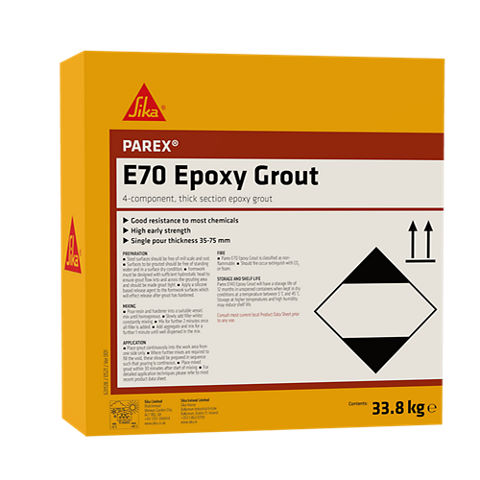
Parex E70 Epoxy Grout
High strength epoxy resin-based grout
Parex E70 Epoxy Grout is part of the Parex E Epoxy grout range cover a wide range applications and void thicknesses.
Parex E70 Epoxy Grout is a 4 component, high performance, precision, epoxy grouting system. Suitable for placing at temperatures between 5ºC and 45ºC.
- High early strength and fast curing
- Also applicable at low temperatures (in conjunction with Parex E33 winter additive)
- Ready-to-mix, pre-batched units
- Non-shrink
- Corrosion and chemically resistant
- Stress and impact resistant
- High compressive strength
- Good creep resistance
